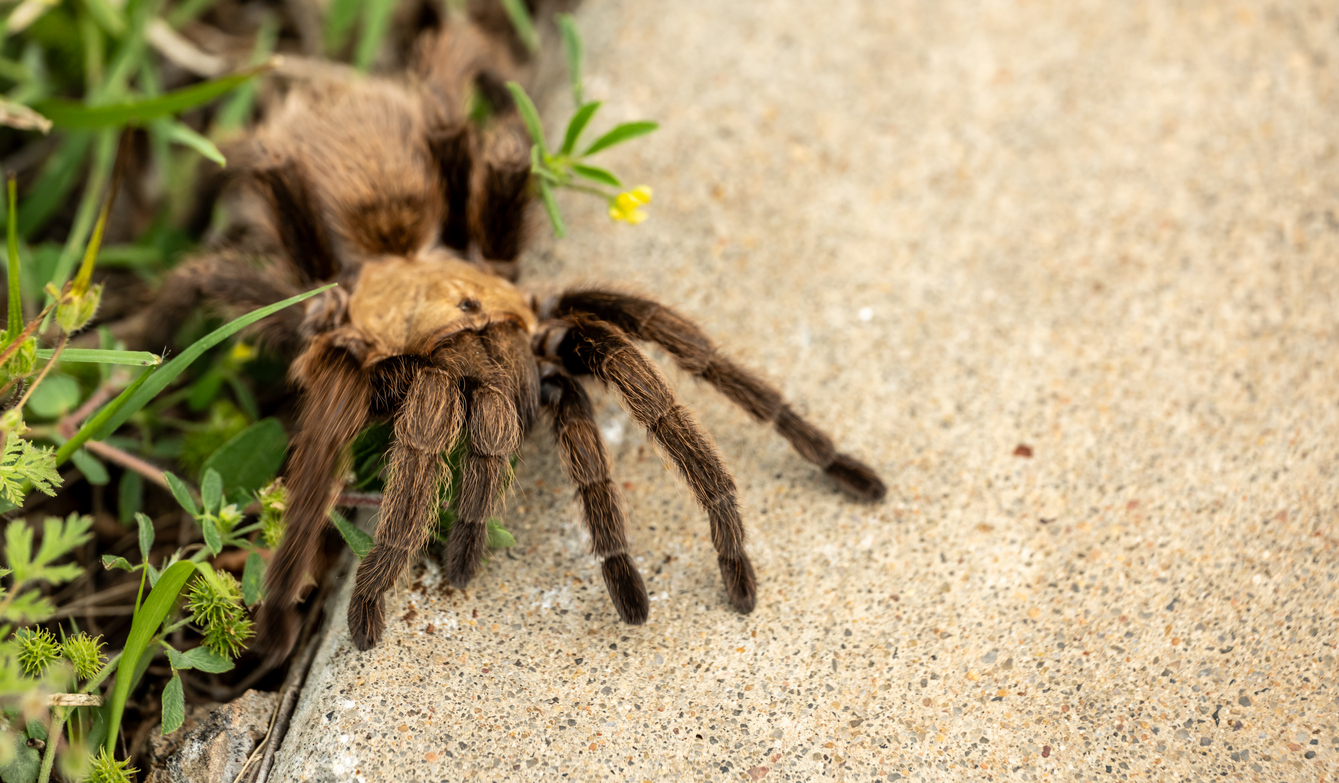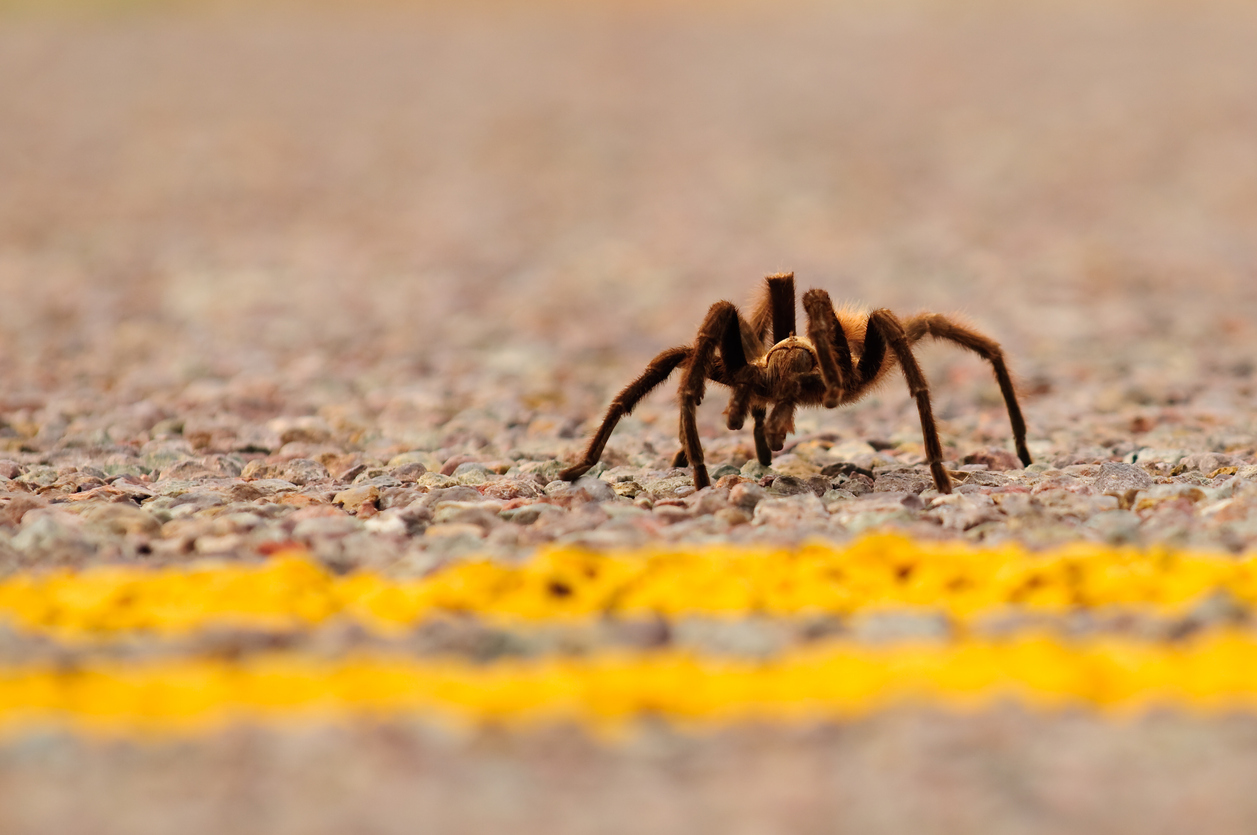Weaving a Love Story: A Tarantula’s Search for Romance
Pumpkin spice and changing leaves aren’t the only signs of fall in the Southwest. For states like Arizona, Oklahoma, and New Mexico, the cool weather means another fall staple is right around the corner — tarantulas.
The good news? They’re not here to hurt you. The sight of these large, furry spiders may give you the creeps, but the reason they come out this time of year is actually quite cute. For tarantulas, fall means its mating season, and after spending so much time underground, they emerge with one mission in mind: finding love.

The Annual Tarantula Trek
For most of the year, tarantulas prefer to hide in their burrows away from humans. This changes in September and October, when male tarantulas put all eight of their legs to use and begin a journey that can span miles. While thousands of tarantulas are on the move during this time, you won’t see them all at once. Instead, they travel solo, hoping to beat out other males in the race to find a female tarantula’s burrow.
Sparks and Webs Fly
After crossing roads, open stretches of desert, and the occasional residential area, a lucky eight-legged bachelor will find a female’s burrow. To kick off the courtship, he’ll tap on the edge of the burrow, sending vibrations down to alert the female of his presence. If she finds her suitor interesting, she will emerge, and the two spiders engage in a brief and complex ritual.
While the female spider decides if the male is up to her standards, he’ll have to carefully navigate his date’s temperamental nature. Tarantulas are solitary creatures, and the meetings don’t always go as planned. There’s a high chance the female will kill the male before or after they mate, making this an interaction that can quickly turn deadly. However, if everything is successful, the two spiders will mate, and the female will lay eggs in the coming months.

The Tarantula Life Cycle
Once a male tarantula successfully mates with a female, his role in the reproductive process ends. The long journey and the act of mating leave males tired and sluggish, and if they don’t become food for the female, they die from exhaustion. This may sound like a sad ending to their story, but male tarantulas are usually between 8 and 12 years old when they mate — a ripe old age compared to most spiders and insects.
But really, the story is just getting started. Female tarantulas can live for up to 30 years, meaning there are plenty of motherly duties to tend to. After mating, the female will lay the eggs in her burrow, wrap them in silk, and protect them until they hatch. A single egg sac can contain hundreds of eggs, and after a few weeks, the baby spiders hatch and crawl their way into the world.
The Local Impact of Tarantula Mating Season
In states like Arizona, the sight of these giant spiders is actually a good thing. Tarantulas play an important role in the ecosystem by keeping insect populations in check. Their presence is an indicator of a healthy, balanced desert environment — not an omen that the events of Arachnophobia are about to occur. So, if you’re scared at the thought of thousands of tarantulas roaming around, take comfort in knowing that a successful mating season means fewer crickets and cockroaches to worry about next spring and summer.

How to Handle Tarantula Encounters
If you see a tarantula during mating season, the best course of action is to leave it alone. Despite their scary appearance, tarantulas are quite docile, and they’d much rather continue searching for a mate than mess with a human. They are capable of biting if they feel threatened, but their venom is mild and feels like a bee sting.
Tarantulas also move slowly, so if you find one that’s been sticking around near your home for too long, consider using a small container to relocate it somewhere safe. Additionally, keep curious dogs, cats, and kids away from these creepy crawlers. Tarantulas’ fuzzy looks are also a defense mechanism — when threatened, they release urticating hairs into the air that irritate predators’ eyes, mouth, and skin.
Not Ready to Let Spiders Take Care of Your Pest Control?
All those baby tarantulas will grow up to do their part in reducing insect populations, but we’re still ready to go Beyond The Call for all your other pest control needs. Contact us today to keep your fall insect-free.






 YouTube
YouTube Facebook
Facebook Twitter
Twitter Instagram
Instagram